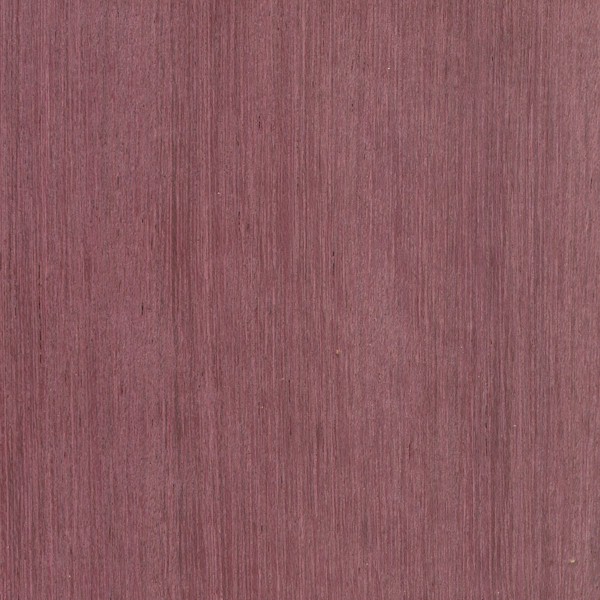Purple Heart
Color/Appearance: When freshly cut the heartwood of Purpleheart is a dull grayish/purplish brown. Upon exposure the wood becomes a deeper eggplant purple. With further age and exposure to UV light, the wood becomes a dark brown with a hint of purple. This color-shift can be slowed and minimized by using a UV inhibiting finish on the wood. For more information, see the article Preventing Color Changes in Exotic Woods.
Grain/Texture: The grain is usually straight, but can also be wavy or irregular. Has a medium texture with good natural luster.
Endgrain: Diffuse-porous; medium to large pores, few; solitary and radial multiples; mineral deposits occasionally present; growth rings may be either distinct or indistinct depending on species and growing conditions; medium rays barely visible without lens, normal spacing; parenchyma winged, lozenge, confluent, unilateral, and occasionally marginal.
Rot Resistance: Purpleheart is rated as being very durable, and resists both decay and most insect attacks, though it has been reported to be susceptible to attack from marine borers.
Workability: Working with Purpleheart can present some unique challenges: if the wood is heated with dull tools, or if cutter speeds are too high, Purpleheart will exude a gummy resin that can clog tools and complicate the machining process. Depending on the grain orientation, can be difficult to plane without tearout. Purpleheart also has a moderate dulling effect on cutters.
Odor: Varies depending upon the species: most species have no characteristic odor, though some species can have a pungent scent.
Sustainability: This wood species is not listed in the CITES Appendices or on the IUCN Red List of Threatened Species.
Common Uses: Inlays/accent pieces, flooring, furniture, boatbuilding, heavy construction, and a variety of specialty wood items.
Comments: Sometimes called Amaranth, this colorful Latin American hardwood is tremendously popular for furniture and other designs that call for a unique splash of color.
In addition to its coloration, Purpleheart has excellent strength properties, and can be used in applications where strength is important—a wood for both form and function.



